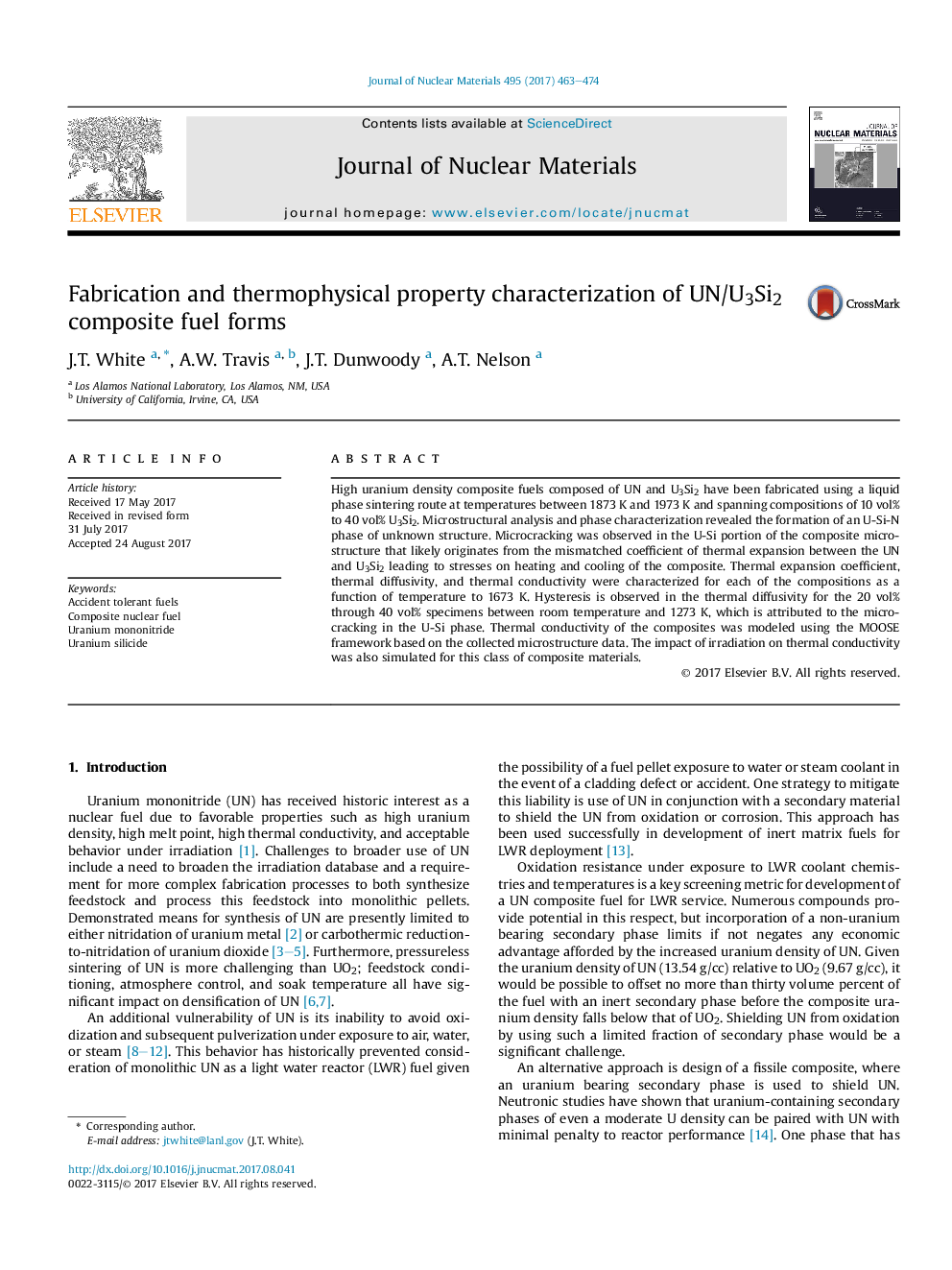| Article ID | Journal | Published Year | Pages | File Type |
|---|---|---|---|---|
| 5453870 | Journal of Nuclear Materials | 2017 | 12 Pages |
Abstract
High uranium density composite fuels composed of UN and U3Si2 have been fabricated using a liquid phase sintering route at temperatures between 1873Â K and 1973 K and spanning compositions of 10Â vol% to 40Â vol% U3Si2. Microstructural analysis and phase characterization revealed the formation of an U-Si-N phase of unknown structure. Microcracking was observed in the U-Si portion of the composite microstructure that likely originates from the mismatched coefficient of thermal expansion between the UN and U3Si2 leading to stresses on heating and cooling of the composite. Thermal expansion coefficient, thermal diffusivity, and thermal conductivity were characterized for each of the compositions as a function of temperature to 1673Â K. Hysteresis is observed in the thermal diffusivity for the 20Â vol% through 40Â vol% specimens between room temperature and 1273Â K, which is attributed to the microcracking in the U-Si phase. Thermal conductivity of the composites was modeled using the MOOSE framework based on the collected microstructure data. The impact of irradiation on thermal conductivity was also simulated for this class of composite materials.
Related Topics
Physical Sciences and Engineering
Energy
Nuclear Energy and Engineering
Authors
J.T. White, A.W. Travis, J.T. Dunwoody, A.T. Nelson,
